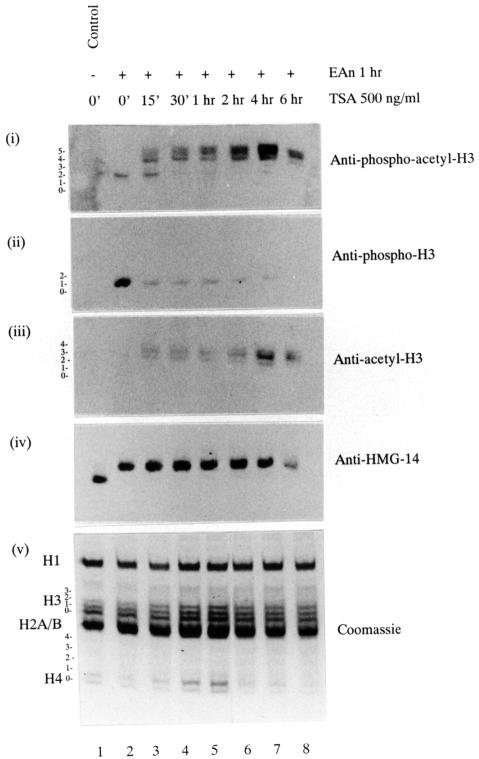Fig. 6. Rapid increase in the phosphoacetyl-H3 epitope in response to TSA pretreatment. Quiescent C3H 10T1/2 cells received no pretreatment (lanes 1 and 2) or were pretreated with 500 ng/ml TSA for 15 min (lane 3), 30 min (lane 4), 1 h (lane 5), 2 h (lane 6), 4 h (lane 7) or 6 h (lane 8). Cells were stimulated with 50 ng/ml EGF plus 10 µg/ml anisomycin (EAn, lanes 2–8) for the last hour; lane 1 is an unstimulated control. Acid-soluble nuclear proteins were resolved on 15% acid–urea gels, transferred to PVDF membrane and analysed by western blotting using anti-phosphoacetyl-H3 antibodies (panel i), anti-phospho-H3 antibodies (panel ii), anti-acetyl-H3 antibodies (panel iii) or anti-HMG-14 antibodies (panel iv). Coomassie-stained gel is shown in panel v. The positions of the modified forms of histone H3 are numbered corresponding to the number of post-translational modifications visualized by Coomassie staining of gels or Ponceau S staining of PVDF membrane.

An official website of the United States government
Here's how you know
Official websites use .gov
A
.gov website belongs to an official
government organization in the United States.
Secure .gov websites use HTTPS
A lock (
) or https:// means you've safely
connected to the .gov website. Share sensitive
information only on official, secure websites.
